5 Best Progressive Reloading Press + Buyer’s Guide
Ever fired a round you made yourself? It’s incredibly rewarding. But picking the perfect progressive reloading press? With so many presses available out there, that’s not a simple task. But don’t worry, as a former Navy officer with over a decade of shooting experience, I’m here to guide you through selecting the perfect progressive reloading press to fit your needs. In this guide, we’ll learn what a progressive reloading press is, the different types of presses, and check out the top contenders on the market. By the end, you’ll be ready to pick the perfect progressive reloading press for you.
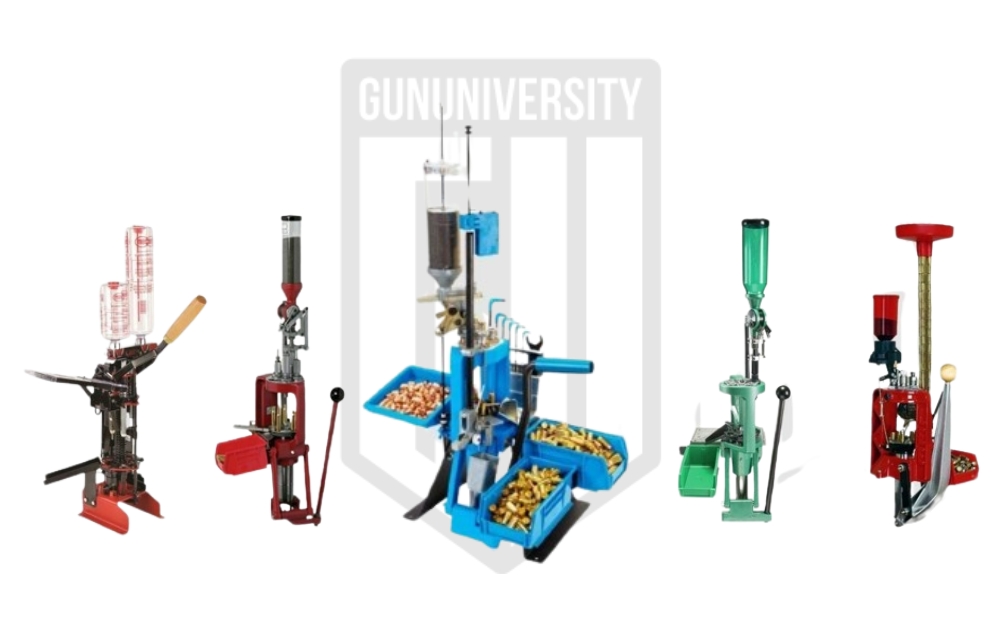
What Is a Progressive Reloading Press?
Progressive reloading presses are reloading presses (the main tool to assemble and load your own ammunition at home) that allow you to perform more than one loading operation per stroke of the machine’s handle.
For example, a progressive reloading press has multiple “stations” where old brass casings are de-primed and resized, a new primer is installed, gunpowder is filled, a bullet is seated, and, in some cases, crimped in place. All of these operations happen simultaneously on a progressive press.
Progressive presses are contrasted with single-stage reloading presses wherein only one operation is performed for every pull of the handle.
How I Chose the Best Progressive Reloading Press
As a former Navy officer with a passion for shooting sports, I’ve always taken pride in reloading my own ammunition. Many years ago, when I organized a shooting competition among friends, I found myself needing to ramp up my ammunition production. It was then that I understood the efficiency and convenience of using a progressive reloading press. Since that competition, I’ve become a dedicated fan of reloading my own ammunition, and I’ve relied on progressive presses ever since.
After years of using progressive reloading presses, I thought of sharing my expertise by providing a comprehensive review of the best reloading presses on the market. I’ve compiled a list of the top contenders to help those who are looking to find the right press for their needs
When it came time to choose the best progressive reloading press for this list, I considered what had served me well in the past. But after all, I’m just one person. So, to ensure a well-rounded review, I reached out to my fellow shooter friends for their suggestions and insights. Based on their input and my personal expertise, I ranked the progressive reloading presses from 1 to 5.
Now I know everyone has their own preferences when it comes to reloading presses and what might work for me might not work for you. With this in mind, I took care to account for a variety of needs and preferences when compiling this list. To further assist you in your decision-making process, I included a detailed buyer’s guide. This guide will help you understand what to look for when purchasing a press and help you choose the best progressive reloading press for your specific needs.
Table of contents
5 Best Progressive Reloading Presses
Editor’s Choice Dillon Precision XL750 |  |
| See Price |
Best Value Hornady Lock-N-Load Progressive | 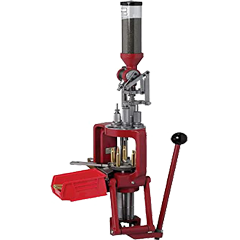 |
| See Price |
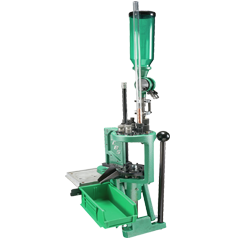 |
| See Price | |
Shotgun Only MEC 9000 Shotgun Press | 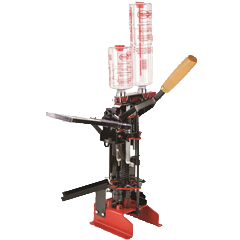 |
| See Price |
Budget Option Lee Loadmaster Progressive | 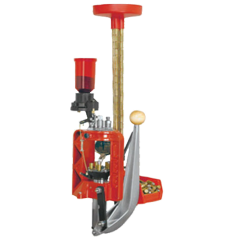 |
| See Price |
Progressive Reloading Press Reviews
The hard part may be choosing the best progressive reloading press for your needs. But there are plenty of options available.
If you’re looking to advance to the next level of reloading solutions for your handgun, rifle, or shotgun, the following are 5 options for you to choose from.
In my opinion and experience, Dillon reloading machines are the best options, hands down, for reloading ammunition.
The relatively new Dillon Precision XL750 can give you the efficiency you need while offering a high level of consistency. This press has replaced my previous favorite, the Dillon XL650, and is the editor’s choice on my list.
If you’d like to save some money and don’t mind manually rotating the shell plate each time, you should check out the Dillon RL550.
The stations provided on the Dillon progressive reloading press allow you to size and prime cases, load your powder and set and crimp ammunition. This is effectively the same as any other progressive press, however, Dillon includes an extra location for a powder sensor if you choose to have one.
A powder sensor is handy because the powder drop may not place the correct amount of powder in a case. Dillon’s case-activated powder drop is the best available, in my opinion, but there’s still a chance that a case may not get powder (especially if you allow yourself to get distracted while loading and come back from a break and forget which part of the process you were in).
You can upgrade the xl750 (or the previous xl650) with an automatic bullet feeder but I don’t think this is necessary or worth the extra cost. Even in a high-volume loading situation, I’ve never had an issue manually placing each bullet on the case.
If you’re low on primers, an alarm will notify you to prevent surprise interruptions when reloading – this is super handy. Loading the primer system and performing other essential tasks is clear and easy to do if you get some extra primer loading tubes.
In fact, if you have enough primer tubes prepped and ready to go, you can easily load over 1,000 rounds per hour on this machine.
This progressive reloading press may cost a little more, but you can expect a versatile machine with the heavy-duty durability gun owners want — all backed by the best warranty I have ever seen. Trust me, I’ve used this warranty more than once…
I’ve stuck a piece of rifle brass in a die (my fault), brought it into the Dillon retail store in Arizona to see if they knew of a trick to get the brass out, and Dillon tossed me a new die with no questions asked.
I’ve literally blown up my machine by squishing a primer and setting the rest of the primer stack off (wear safety glasses when reloading). I called Dillon and told them that the machine was damaged – they sent me an entirely new machine with no questions asked.
Recently, I noticed some signs of wear (after 15 years and many many thousands of rounds reloaded) so I took it in for service. Dillon said it’d just be easier to give me a new machine than it would to replace the worn parts. Again, no questions asked.
I’ve never had such a good experience with any product or any company in any industry.
For more on the Dillon Precision XL750 check out the review here.
Dillon Precision XL750 Pros and Cons
- High production rate
- Shell plate design exceeds other models
- You can integrate a bullet and case feeder
- Switching between calibers takes some time
- Higher cost
Let’s talk about the Hornady 366 Auto Shotshell Reloader – a reliable contender in the shotgun reloading game. This bad boy has earned its stripes, but let’s break down its performance across the key categories.
First up, gauge compatibility. The Hornady 366 has been a reliable companion across various gauges. Whether I’m loading up my favorite 12-gauge shells or experimenting with a 16-gauge twist, this reloader handles the challenge with ease. It’s versatile, which is a big plus.
Now, when it comes to ease of use, the Hornady 366 strikes a balance. Setting it up took a bit of getting used to, but once you’re in the groove, it’s a breeze. The design is straightforward, and the auto-indexing feature speeds up the process. It’s not as automated as some, but that’s not necessarily a bad thing. It gives you more hands-on control.
Speed? Well, it’s no Dillon RL1100, but the Hornady 366 holds its own. It’s efficient, and the auto-indexing system keeps the workflow smooth. You won’t be breaking any speed records, but it gets the job done reliably.
Now, the cost is where the Hornady 366 stands out. It’s a solid performer without breaking the bank. If you’re looking for a reliable workhorse without the hefty price tag, this one’s worth considering.
Durability is where this reloader shines. I’ve put it through its paces, and it’s held up like a champ. The build quality is impressive, ensuring it’ll stick around for the long haul.
Of course, no tool is perfect. The setup might be a bit intimidating for beginners, and the speed might not satisfy those with high-volume needs. However, for the average shooter looking for reliability, versatility, and a friendly price point, the Hornady 366 Auto Shotshell Reloader is a solid choice. It’s my third pick, but it’s a reliable workhorse that won’t disappoint in the reloading game.
Hornady Lock-N-Load Pros and Cons
- Easy set-up and use
- 5 stations
- Accurate powder measurement
- Fast reloading process
- Higher cost
- Additional accessories require purchase
- Lock-N-Load bushing can become unseated easily
For shooters looking for a solid machine with a decent production rate and plenty of options for dies and accessories, the RCBS Pro Chucker 7 Progressive Press has 7 stations you can work with — more than any other press on this list.
This machine lets users press approximately 600 rounds in an hour and features an automatic indexing system. You can change calibers quickly using its quick-change die plate.
The RCBS Pro Chucker 7 Progressive Press features a large capacity Quick Change powder measure. This minimizes how often you have to fill the hopper. The machine’s drain tube makes it easy to remove the powder.
Having more stations allows you to load the press, set, crimp bullets, and perform other tasks with huge efficiency. Its cast-iron frame means a longer lifespan and more stability.
The RCBS Pro Chucker 7 Progressive Press is easy to set up and use, making it an excellent choice for shooters transitioning to progressive reloading presses.
Be sure to read our RCBS Pro Chucker 7 Review here.
RCBS Pro Chucker 7 Pros and Cons
- 7 stations to work with
- Accurate powder measure
- Priming system
- Plastic components may not be as durable as other models
If you want to reload your shotgun shell hulls quickly, this MEC 9000GN is the only and the best way to go.
Please note: this is ONLY for shotgun shells and will not load handguns (pistol or revolver) nor rifle ammunition like the other progressive machines on this list.
Honestly speaking, it has been quite an experience to work with this press. Setting it up and learning its intricacies presented some initial challenges, but once I got the hang of it, I found it to be impressive.
This machine operates smoothly through its six stages of reloading, handling tasks like primer removal and insertion, powder, and shot dropping, with precision. Its progressive design allows for efficient reloading, which is a definite plus.
It’s reasonably priced and I can see its value in terms of efficiency and potential long-term savings. The ability to customize shells according to preferences, adjusting factors like powder load and shot weight, adds to its appeal.
Despite the learning curve and initial frustrations, the MEC 9000GN has proven to be reliable and effective in shell reloading. The capability to produce ammunition, particularly in times of scarcity or rising prices, is invaluable.
For more, check out the MEC 9000GN review here.
MEC 9000 PROS AND CONS
- Quality construction
- Only recommended press for shotguns
- Good aftermarket support
- Shotshell Only
- Learning Curve
The Lee Precision Loadmaster is a budget-friendly solution that offers many features you would expect in other more expensive models.
This makes it an excellent choice for less experienced users transitioning to a progressive reloading press from a single-stage or turret press.
Its cast aluminum construction makes it a lighter machine. and you can switch calibers easily due to the attached dies and quick-change tool head.
You can perform indexing tasks manually or automatically. If you’re just starting out using a progressive reloading press, manual indexing lets you spend more time setting the stages up correctly before using the automatic indexing option.
Reported users who have experienced jamming were able to prevent this issue by making sure they cleaned their small primer pockets before use.
The number of stations in a reloading press affects the speed and efficiency it can provide. The Lee Precision LoadMaster kit has 5 stations that allow users to reload around 400 rounds in an hour.
This reloading press kit features an oversized diameter ram plated with chrome, allowing you to work with larger rifle cartridges, such as magnum loads.
This progressive reloading press’ Pro-Auto Disc Powder Measure feature prevents gunpowder spillage.
This reloading kit is the ideal choice if you’re looking for an affordable press that delivers durability and reliability.
For more on the Lee Precision Load Master check out the review here.
Lee Precision Load Master Pros and Cons
- Quality construction
- 5 stations
- Easy set-up
- Fast reloading
- Some additional accessories require purchase
Best Progressive Reloading Press – Buyer’s Guide
Before you invest in a progressive reloading press, it’s important that you understand what sets each model apart in order to find the one that’s right for you. Selecting the right progressive reloading press means considering several factors such as its production rate, number of stations, ease of use, durability, and more. Use the following guide to make an informed decision and to find the progressive reloading press that perfectly fits your needs.
Factors To Consider When Buying a Progressive Reloading Press
Production Rate: Think about how much ammo you plan to reload. If you’re regularly churning out large quantities, look for a press with a higher production rate, measured in rounds per hour. But if you’re more of an occasional reloader or prefer smaller batches, a press with a lower production rate might be more economical for you.
Number of Stations: Consider the complexity of your reloading process and how many tasks you want to tackle at once. More stations mean you can breeze through multiple steps – like case resizing, priming, powder charging, bullet seating, and crimping – in a single stroke of the press handle. Just make sure you’re not paying for extra stations you won’t actually use.
Ease of Setup and Use: Look for user-friendly features that make setting up, operating, and maintaining the press a breeze. Quick-change die systems, automatic indexing, and clear instructions are especially handy, especially if you’re new to reloading. A press that feels intuitive and comfortable to use can make a world of difference during those reloading sessions.
Durability and Construction: Make durability a priority. A well-built press, crafted from sturdy materials like cast iron or high-grade aluminum, will stand the test of time and keep delivering consistent performance. A solid press minimizes vibrations, improves precision, and provides a stable platform for reloading – ensuring safety and satisfaction with each round.
Compatibility and Versatility: Check if the press can handle a variety of cartridge sizes, calibers, and ammunition types. Versatility is key here, so look for presses that support different reloading components and accessories. Having the flexibility to work on various projects and shooting applications can make your reloading experience much more enjoyable and convenient.
Additional Features and Accessories: Explore optional features and accessories that can enhance your reloading process. Case feeders, priming systems, powder measures, and bullet feeders can streamline your workflow, reduce manual labor, and improve overall efficiency. While they might add to the cost, consider the value they bring in making your reloading sessions smoother and more productive.
Budget and Value: Set a budget that aligns with your needs and expectations. While cost is important, focus on getting the most value out of your investment. Evaluate the press’s performance, durability, features, and included accessories relative to its price tag. A well-balanced investment ensures you get a reliable, high-quality press that delivers satisfying results without breaking the bank.
Brand Reputation and Warranty: Do your homework on reputable manufacturers known for their top-quality reloading equipment and exceptional customer service. Customer reviews, testimonials, and industry reputation can give you insight into the reliability and satisfaction levels associated with specific brands. Don’t forget to check the manufacturer’s warranty coverage and policies to protect your investment and address any potential issues down the line.
Now that you know what factors to consider when buying a progressive reloading press, let’s discuss who needs one, the accuracy of these presses, and the different types of reloading presses available.
Who Needs a Progressive Reloading Press?
Progressive reloading equipment is ideal for anyone looking to produce and reload more ammunition in less time. It may not be suitable for everyone, though, because of its higher upfront cost and it is a slightly more complicated reloading system.
Progressive presses are great for speed and high volume. They’re not as great on upfront cost or simplicity.
What is the best reloading press for beginners? Single-stage reloading presses are the most basic reloading machines recommended for the novice. They’re also the least expensive.
With a single-stage press, users choose a single die to complete a particular step in the reloading process with each pull of the machine’s handle. The reader must then change the die to the next step in the process and continue on.
Are Progressive Reloading Presses Accurate?
Yes, progressive reloading presses are pretty accurate, though not generally as accurate as single-stage presses or turret reloading presses. This is not because of the press itself but rather how it is used – time and care are not generally given to each individual round of ammunition on a progressive machine.
A progressive reloading press has multiple dies. Each one plays a specific role, including removing spent primers, bullet seating, resizing casings, crimping, decapping, and inserting powder into casings. A single pull of the press handle simultaneously progresses multiple rounds through the process.
Speed and volume are really what progressive presses offer. A progressive reloader can offer 3 to 8 stations, which allows you to achieve the production rate you’re looking for.
Progressive Press vs. Turret Press vs. Single Stage
Before picking up a new reloading press, you need to remember that progressive presses are not the end-all solution to reloading. You may want to consider another style of press such as a turret reloading press or a single-stage. But, let’s learn a little more about the progressive, turret, and single-stage presses and understand their differences.
Progressive Reloading Press: A progressive reloading press is a type of reloading press that allows you to perform more than one loading operation per stroke of the machine’s handle. Unlike single-stage and turret presses, progressives are designed for speed and volume. They achieve this by incorporating multiple stations (usually 3-8) on a rotating plate. Each station holds a specific die, and with each pull of the handle, a complete cartridge progresses through various stages like sizing, priming, powder charging, and bullet seating. This automation allows for mass production of ammunition in a shorter timeframe. However, this complexity comes at a cost – progressive presses require careful setup, more attention to detail to avoid errors, and a higher initial investment compared to other press types.
Turret Press: A turret press is a type of punch press used for metal forming by punching. It gives you a nice middle ground between speed and simplicity. This press features a rotating turret that holds multiple dies (typically 3-4). You manually index the turret to bring the desired die into position and complete each step for a single cartridge. This allows for faster reloading compared to a single-stage press, while still providing the advantage of focusing on one step at a time.
Single-Stage Press: A single-stage press is a reloading press that performs one reloading operation at a time. It uses one die at a time, requiring you to complete each step (depriming, resizing, priming, bullet seating, crimping) individually for each cartridge case. While slow, it’s a great way for you to learn the reloading process and it offers maximum control over each step. Also, this is the simplest and most affordable option among the presses available. Also, a single-stage reloading press is better for beginners or riflemen who want more accurate long-distance rounds.
Do You Need a Progressive Reloading Press?
Finding the best progressive reloading press comes down to the features that each model provides. If you’re looking to make your own ammunition or increase your current reloading production rate, the above 5 options have all the features you could ever need.
Comment below if you agree, or if you disagree! We love to hear our readers’ thoughts.
If you would like to learn more about reloading presses, firearm safety, training courses, accessories, and other topics, start with our Gun 101 – Getting Started With Firearms article.
Best Progressive Reloading Press – FAQs
What is the difference between a turret press and a progressive press?
Turret presses handle one cartridge at a time but hold multiple reloading dies to switch between for a quicker experience than a single-stage press. A progressive press can hold and operate multiple reloading dies and doesn’t need you to switch between them manually. Progressive presses are typically more expensive.
What is the difference between a progressive reloading press and a single-stage reloading press?
The single-stage press is much slower than a progressive reloading press, with fewer moving parts. You perform a single step of the process, change die sets, and start another step. This drastically reduces production rates. However, more attention and care can be given to each step.
What is the best progressive reloading press?
The Dillon XL750 Press might be the best progressive reloading press. Its extremely high production rate makes it easy for you to reload more ammunition in a shorter amount of time.
What’s the best single-stage reloading press?
The RCBS 9356 Rock Chucker Supreme Press offers high-quality construction and a press frame that gives you rigid support and strength.
What is the most accurate reloading press?
The most accurate reloading press is typically the single-stage press. It has fewer moving parts compared to the progressive reloading press, allowing the operator to focus more on detail and precision. While it may not offer the same rapid production rate as a progressive reloading machine, its design lends itself to higher levels of accuracy.
Which progressive reloading press is the best?
The best progressive reloading press is the Dillon Precision XL750. This press is known for being super efficient, consistent, and tough. It comes with cool features like a powder sensor, automatic primer loading, and a really good shell plate design.
Recent Posts
December 15, 2025
December 15, 2025
December 12, 2025
December 12, 2025

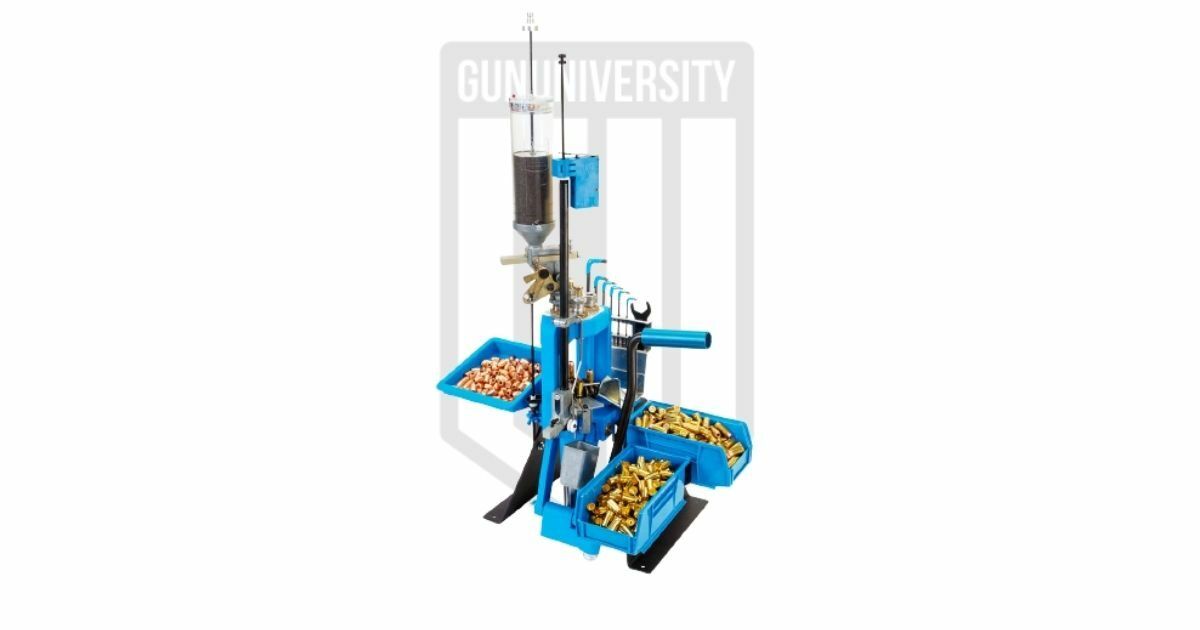
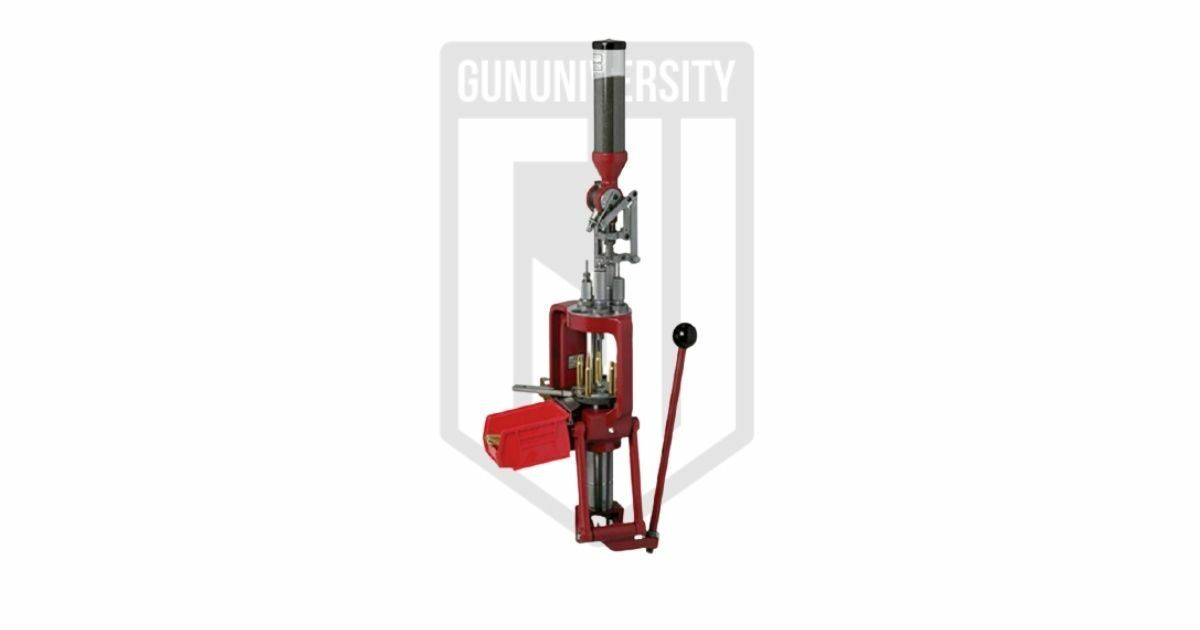
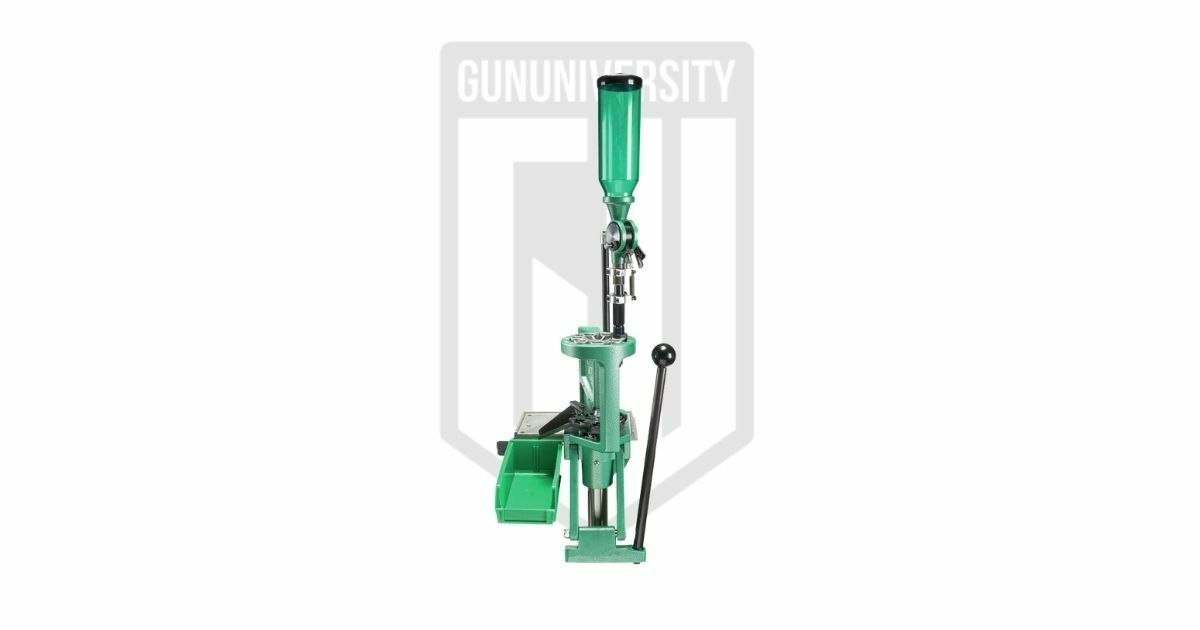

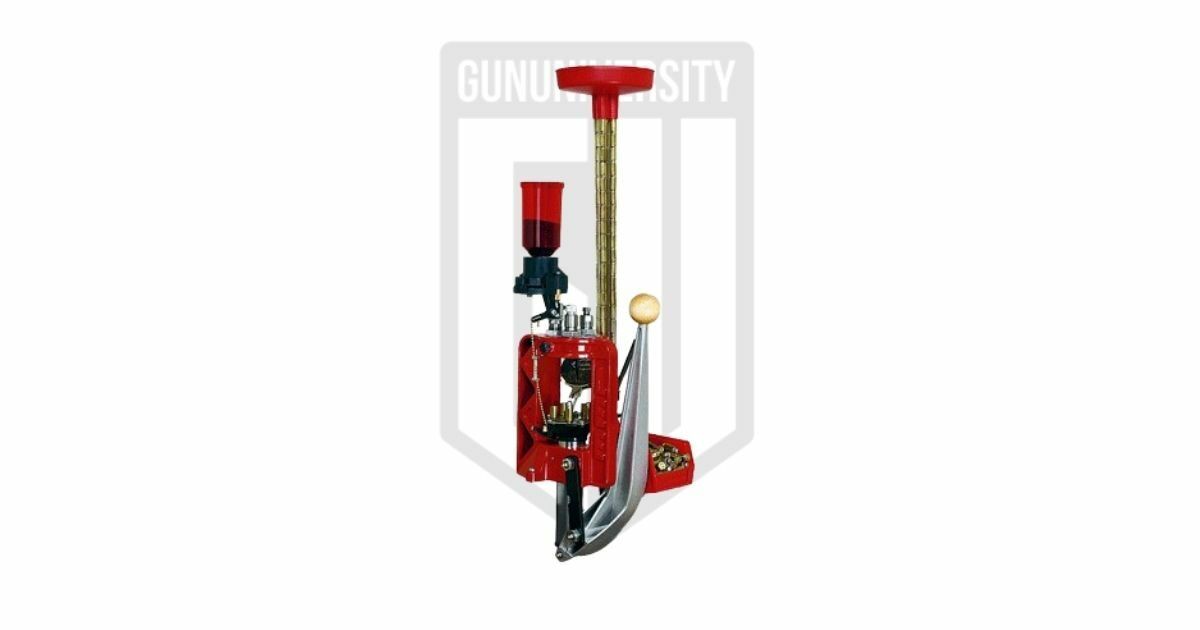


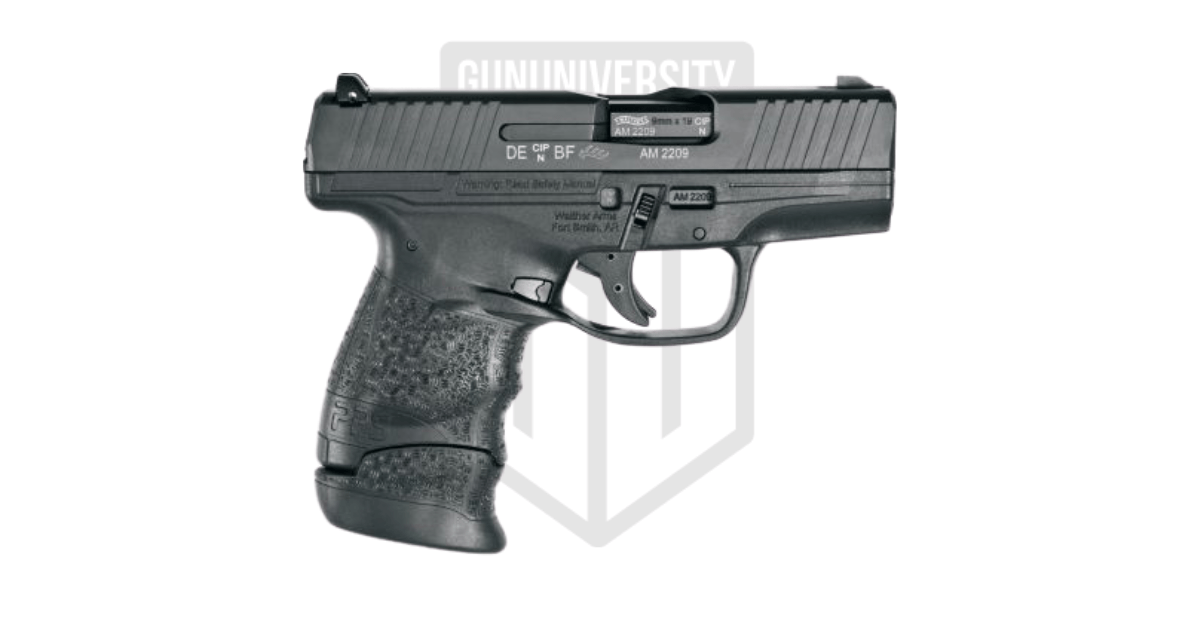
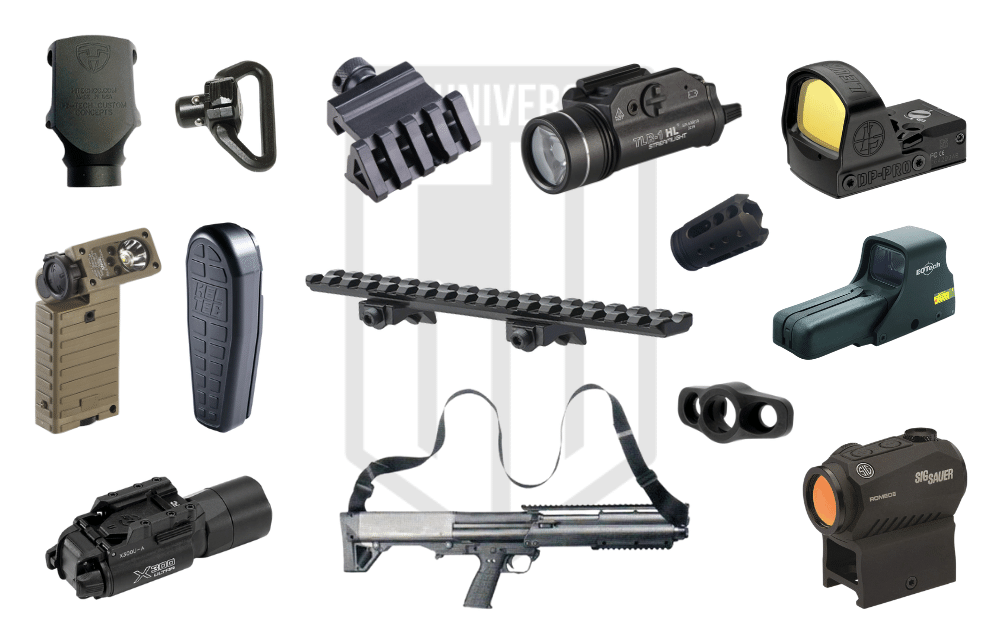
Thanks for the info. I am thinking about starting to reload and don’t know anything about anything . Your description of the Hornady product didn’t show up on the article I read(it was a repeat of the shotgun reloader) but I still was able to understand the pris and cons and most people I know use the Lock and Load AP so I can ask them why they chose Hornady.
A lee progresive would be a more competave press than the 1 you chose…. also.. the pro 1k had a major upgrade in 2023…. and a fairer comparison… to the expensive offerings…… yes…. i have 2 lnl . And a dillion 550c….. harie godden… brendale qld. Australia
I’M Looking Into Automatic Reloading Machine SPECS any Info you got would be Appreciative. Many Thanks